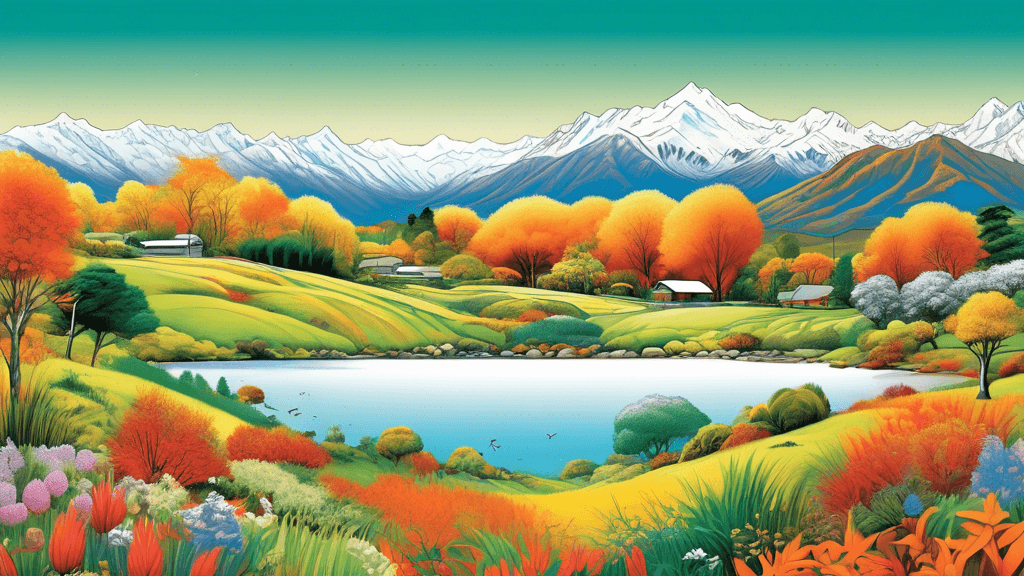
Seasonal Color Changes in New Zealand's Landscape
Share
Understanding the Seasonal Color Transformations of New Zealand's Landscape
New Zealand, renowned for its scenic landscapes and diverse ecosystems, offers a visual feast that changes dramatically with the seasons. This article explores the unique seasonal color changes visible across the country, their significance to the local ecology and tourism, and how photographers and art enthusiasts can capture these transformations. It's tailored for environmentalists, travelers, photography enthusiasts, and anyone with a keen interest in nature’s palette.
Why Does New Zealand Experience Such Dramatic Seasonal Changes?
The diverse geographical features of New Zealand, ranging from coastal plains to towering mountains, along with its location in the Southern Hemisphere, contributes to its wide array of climatic conditions and subsequently, its varied seasonal landscapes. But what makes New Zealand's seasonal changes so unique and visually striking?
- Rich Biodiversity: New Zealand's isolation and varied habitats support unique floras adapted to different climates and terrains.
- Geographical Layout: The north-south orientation of the islands means that you can witness sub-tropical climates in the north and temperate climates in the south, all within the same season.
- Maritime Influence: The surrounding oceans moderate the temperatures, which enhances the growth of a dense and diverse vegetation.
Seasonal Highlights Across New Zealand
Each season paints the landscapes of New Zealand in its unique hue, from vibrant greens to fiery reds and serene whites. Let’s delve into what each season has to offer:
Spring (September - November)
Spring is a season of rebirth and rejuvenation. The countryside is dotted with baby lambs, and cherry blossoms create pink and white spectacles in places like Central Otago and Christchurch. Notably, the kowhai, with its vivid yellow blooms, becomes a highlight for both tourists and native birds like the tui and bellbird.
Summer (December - February)
Summer unveils a palette of deep greens as forests fill in. Beach towns like Coromandel and Bay of Plenty burst into life, adorned with pohutukawa trees, commonly referred to as New Zealand's Christmas tree, which feature brilliant crimson flowers.
Autumn (March - May)
Autumn is perhaps the most celebrated season for its fiery colors. Regions like Central Otago and the Hawke’s Bay are transformed into landscapes of gold, orange, and red hues as trees like maples and oaks change color. This season is particularly significant for photographers and artists who come to capture the spectacular color gradients.
Winter (June - August)
Winter cloaks the higher regions in snow, creating serene, white landscapes. Regions such as the Southern Alps become stunningly beautiful but also a hub for winter sports.
The Impact of Seasonal Changes on Ecology and Tourism
These rhythmic color changes are not just a treat for the eyes—they play a crucial role in New Zealand’s ecological balance. They regulate the life cycles of many native species and dictate the migration patterns of birds and marine life. For instance, the flowering of certain plants in spring provides nourishment for pollinators, whose populations affect the local food chain.
Tourism also peaks in different regions according to the seasonally changing landscapes. Autumn, for example, brings global visitors to Central Otago, not only boosting local economies but also raising awareness around conservation issues.
Capturing and Conserving the Seasonal Scenes
For photographers and art lovers, capturing the essence of these transformations requires not just technical skill but also a respect and understanding of the environment. Here are a couple of tips:
- Right Timing: To catch the full splendor of seasonal changes, timing your visits during the early or late hours of the day can capture the best light—soft, diffused, and rich in color.
- Environmental Responsibility: While engaging with these landscapes, it's important to practice responsible tourism by abiding by local conservation laws and leaving no trace.
As Roger Deakin, a noted writer and environmentalist, once observed, To be truly engaged with the natural world, you have to become part of it, to be entwined. This engagement is not just about witnessing beauty; it’s about preserving it for future generations.
Concluding Thoughts
The dynamism of New Zealand's landscapes provides a canvas that continues to attract and inspire many. By understanding and respecting these natural cycles, we not only enhance our experiences but also contribute to the sustainability of such magnificent ecosystems.
Are you ready to explore the vivid landscapes of New Zealand and see the world through a more vibrant lens? Remember to travel responsibly and cherish every color along the way!





